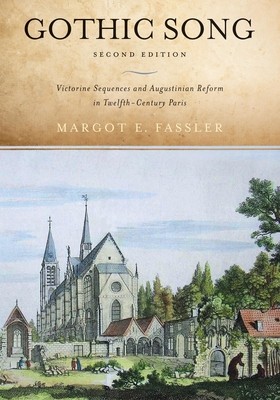
- We will send in 10–14 business days.
- Author: Margot E Fassler
- Publisher: University of Notre Dame Press
- ISBN-10: 0268206201
- ISBN-13: 9780268206208
- Format: 17.8 x 25.4 x 2.9 cm, kieti viršeliai
- Language: English
- SAVE -10% with code: EXTRA
Reviews
Description
Margot E. Fassler's richly documented history--winner of the Otto Kinkeldey Award from the American Musicological Society and the John Nicholas Brown Prize from the Medieval Academy of America--demonstrates how the Augustinians of St. Victor, Paris, used an art of memory to build sonic models of the church. This musical art developed over time, inspired by the religious ideals of Hugh and Richard of St. Victor and their understandings of image and the spiritual journey. Gothic Song: Victorine Sequences and Augustinian Reform in Twelfth-Century Paris demonstrates the centrality of sequences to western medieval Christian liturgical and artistic experience, and to our understanding of change and continuity in medieval culture. Fassler examines the figure of Adam of St. Victor and the possible layers within the repertories created at various churches in Paris, probes the ways the Victorine sequences worked musically and exegetically, and situates this repertory within the intellectual and spiritual ideals of the Augustinian canons regular, especially those of the Abbey of St. Victor.
Originally published in hardover in 1993, this paperback edition includes a new introduction by Fassler, in which she reviews the state of scholarship on late sequences since the original publication of Gothic Song. Her notes to the introduction provide the bibliography necessary for situating the Victorine sequences, and the late sequences in general, in contemporary thought.
EXTRA 10 % discount with code: EXTRA
The promotion ends in 22d.03:07:40
The discount code is valid when purchasing from 10 €. Discounts do not stack.
- Author: Margot E Fassler
- Publisher: University of Notre Dame Press
- ISBN-10: 0268206201
- ISBN-13: 9780268206208
- Format: 17.8 x 25.4 x 2.9 cm, kieti viršeliai
- Language: English English
Margot E. Fassler's richly documented history--winner of the Otto Kinkeldey Award from the American Musicological Society and the John Nicholas Brown Prize from the Medieval Academy of America--demonstrates how the Augustinians of St. Victor, Paris, used an art of memory to build sonic models of the church. This musical art developed over time, inspired by the religious ideals of Hugh and Richard of St. Victor and their understandings of image and the spiritual journey. Gothic Song: Victorine Sequences and Augustinian Reform in Twelfth-Century Paris demonstrates the centrality of sequences to western medieval Christian liturgical and artistic experience, and to our understanding of change and continuity in medieval culture. Fassler examines the figure of Adam of St. Victor and the possible layers within the repertories created at various churches in Paris, probes the ways the Victorine sequences worked musically and exegetically, and situates this repertory within the intellectual and spiritual ideals of the Augustinian canons regular, especially those of the Abbey of St. Victor.
Originally published in hardover in 1993, this paperback edition includes a new introduction by Fassler, in which she reviews the state of scholarship on late sequences since the original publication of Gothic Song. Her notes to the introduction provide the bibliography necessary for situating the Victorine sequences, and the late sequences in general, in contemporary thought.


Reviews